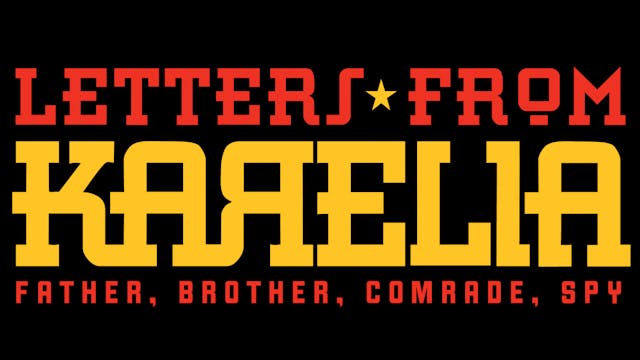Under The Red Star
History
•
1h 19m
The Finnish Labour Temple opened in March 1910, but this workers' hall was a temple of a different sort, one where political rather than religious devotion was practiced. Under the Red Star tells the story of union organizers, strong minded women, athletic children, actors and even poets.
Under the Red Star (a.k.a. Big Finn Hall), is a feature length docu-drama, in Finnish and English, about the vibrant culture and politics at the heart of Canada’s largest labour hall in Thunder Bay, Ontario. In its early days it was inseparably linked to the activities of Canadian labour and the left. The Big Finn Hall was a place where culture and politics came together. This film integrates archival footage, photos and fictionalized scenes to bring to life the lively and dramatic past of the early years of Finnish immigration to Canada. Under the Red Star tells the story of the struggle for a just society in the early twentieth century Canada.
The script is based on interviews with local Finnish Canadians in Thunder Bay, experts on Canadian immigration (Varpu Lindström) and labour history (Michel Beaulieu), a wealth of archival documents and motion picture footage, photos, and a series of dramatizations framed by a running monologue in the character of the poet Aku Päiviö, whose storytelling provides the plot line for a series of dramatizations, archival footage and photos that punctuate the story. The film unfolds like a drama, connecting historical events with narration, acting and archival content.
The film is divided into five acts with each focusing on a major event that shaped Canadian and Finnish Canadian history. The introduction deals with the arrival of the first Finnish immigrants and the establishment of a culturally vibrant Finnish community in the Thunder Bay region and the building of the Big Finn Hall.
Part two of the film looks at the struggle for workers rights and the impact of the civil war in Finland. Part Three takes the story through the Depression era with a focus on the murder of two labour activists and the recruitment of hundreds of Canadian Finns to abandon Canada for the Soviet Union. Part four deals with the recruitment of young Finnish men, like Jules Päiviö, for the Mackenzie Papineau Brigade that took part in the Spanish Civil war. The film concludes with the beginning of the second world war and the end of an era of Finnish radicalism yet a cultural legacy strong enough to withstand the deep divides of a cold war era. A 78 minute docu-drama written, directed and edited by Kelly Saxberg. It had its first sold out community premiere at the Bay Street Film Festival which is held in the Finnish Laobur Temple. It won a People's Choice Award. It had its world debut in Murmansk Russia in November at the International film festival "The Northern Character"
Music by Danny Johnson
Animation by Hubert Den Draak
Produced by Ron Harpelle
Director of Photography Harvey LaRocque
The film stars Rauli Pohjolainen and Kevin Brothers and Finnish actors Jussi Nikkilä and Elena Leeve, 48 Thunder Bay actors and over 200 extras.
Up Next in History
-
Letters From Karelia
Taimi Pitkanen last saw her brother Aate in a Leningrad railway station in 1931.
Taimi was returning to Canada from Moscow; Aate was headed for Soviet Karelia, on the border with Finland, where his skills in electricity and languages - both English and Finnish - were badly needed.
Aate never ca...
-
Borderscapes
Borderscapes draws attention to the complexity surrounding migration and the myriad ethical and political issues arising from contemporary border policies. It builds on testimonial narratives, empirical examples, and reflective accounts to unpack the entanglements of surveillance technologies, th...
-
Ignacio's Legacy
The British film maker Brian Moser first visited the Piraparaná region and its different communities in 1960 as part of an expedition to record their music and to visually document their lives, resulting in the short film Piraparaná. Over the subsequent 50 years and in collaboration with the ant...



